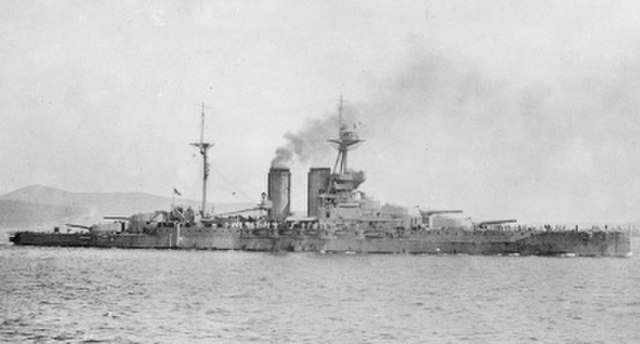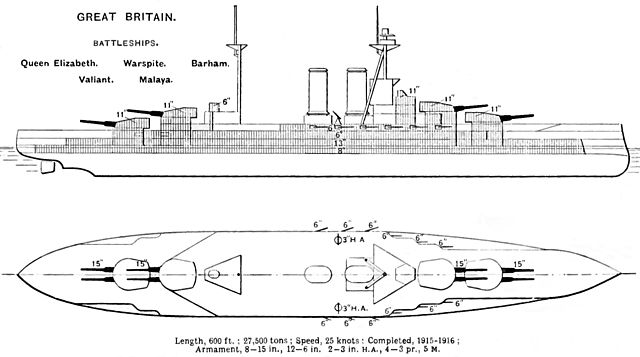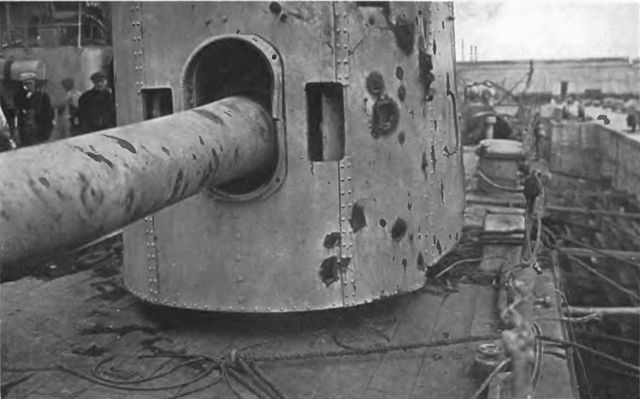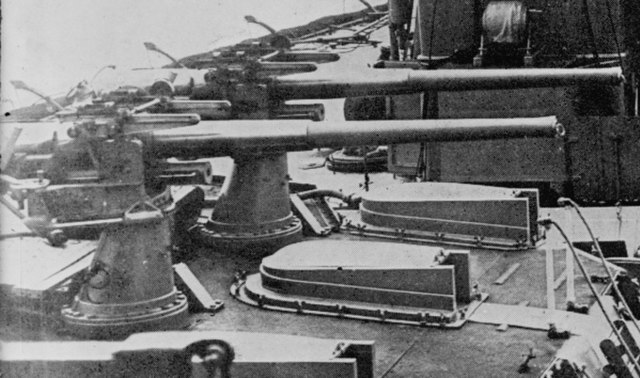Queen Elizabeth-class battleship
The Queen Elizabeth-class battleships were a group of five super-dreadnoughts built for the Royal Navy during the 1910s. These battleships were superior in firepower, protection and speed to their Royal Navy predecessors of the Iron Duke class as well as preceding German classes such as the König class. The corresponding Bayern-class ships were generally considered competitive, although the Queen Elizabeth class were 2 knots (3.7 km/h) faster and outnumbered the German class 5:2. The Queen Elizabeths are generally considered the first fast battleships of their day.
Queen Elizabeth in her original configuration at Lemnos, 24 April 1915
Right plan and elevation drawing from Brassey's Naval Annual 1923; the shaded areas represent the ships' armour plating
Queen Elizabeth c. 1918 showing the two aft port secondary casemates plated over
Forecastle deck gun as added to all ships in 1915–1916, here seen on Warspite after Jutland
The dreadnought was the predominant type of battleship in the early 20th century. The first of the kind, the Royal Navy's HMS Dreadnought, had such an effect when launched in 1906 that similar battleships built after her were referred to as "dreadnoughts", and earlier battleships became known as pre-dreadnoughts. Her design had two revolutionary features: an "all-big-gun" armament scheme, with an unprecedented number of heavy-calibre guns, and steam turbine propulsion. As dreadnoughts became a crucial symbol of national power, the arrival of these new warships renewed the naval arms race between the United Kingdom and Germany. Dreadnought races sprang up around the world, including in South America, lasting up to the beginning of World War I. Successive designs increased rapidly in size and made use of improvements in armament, armour, and propulsion throughout the dreadnought era. Within five years, new battleships outclassed Dreadnought herself. These more powerful vessels were known as "super-dreadnoughts". Most of the original dreadnoughts were scrapped after the end of World War I under the terms of the Washington Naval Treaty, but many of the newer super-dreadnoughts continued serving throughout World War II.

The Royal Navy's revolutionary HMS Dreadnought, launched in 1906, gave its name to the type
USS Texas, the only dreadnought still in existence, was launched in 1912 and is now a museum ship
12-pounder anti-torpedo boat guns mounted on the roof of a turret on Dreadnought (1906)
King George V (left) inspects HMS Neptune








